Dr.Urvashi Tanvar is the winner of the Golden award for applauded cases in the DR Pronto Esthetic Challenge 2, 2021-2022
Introduction
In this fast paced world of dentistry, the dental fraternity is always in the pursuit of newer materials that offer advantages to the tooth and are dentist friendly as well.
Composite resin is one of the most ‘go to’ restorative material due to their highly acceptable aesthetics, mechanical properties, and command setting. However, composite resins are technique sensitive materials and associated with polymerization shrinkage (Yeolekar et al. 2015). This, in turn, carries the risk of microleakage and secondary caries development in situations where moisture control is of concern, such as cases of
- uncooperative children
- multiple sub-gingival caries
- high caries risk individuals.
The recent trend shows restorative resin composites that are user- friendly while either maintaining sufficient mechanical properties or with claimed bioactivity.
New bioactive materials are emerging adding beneficial properties over the existing restorative materials. According to its manufacture, Activa™ BioActive- Restorative is a bioactive-restorative material that can react to the oral changes by means of ion exchange leading to long-term clinical benefits. It combines between the strength and esthetics of composite resins and the benefits of glass ionomers such as moisture tolerance, chemical bond to the tooth, and release and recharge of ions (Pulpdent® 2016–2017).
Following is one such case report where a simple Class III carious lesion in the anterior region was managed with the help of Activa™ Pronto restorative material.
Case Report
A 54 year old lady reported to the clinic complaining of food lodgement in the upper front tooth region of the jaw since 3 months.

On intra oral examination, we noted a carious lesion with 12, 21, 22 and a deep carious lesion with 13 and 14, with tenderness on percussion in 14.
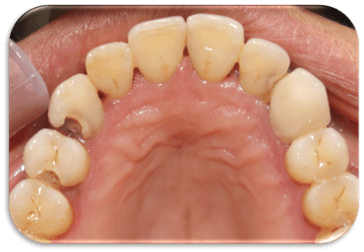
After IOPA evaluation, it was decided to
- restore 12, 21 and 22 with composites
- attempt to save 13 with vital pulp therapy
- perform RCT ON 14 followed by prosthetic rehabilitation.
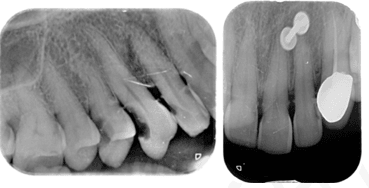
Prophylactic scaling was done.
Treatment of 22
Caries was excavated completely in 22.
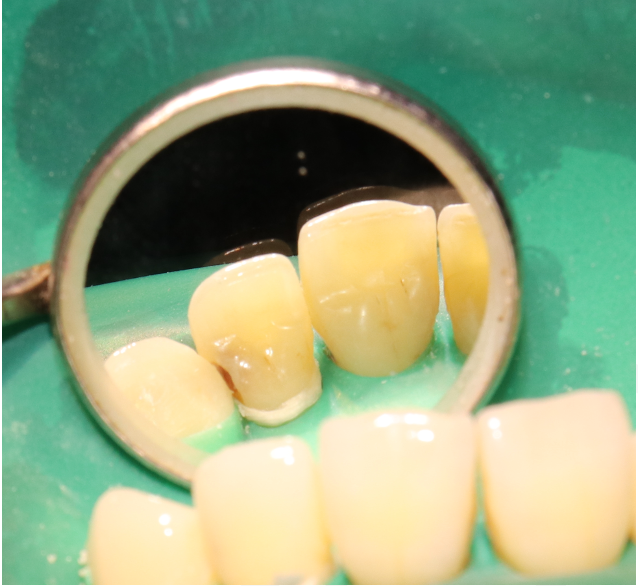
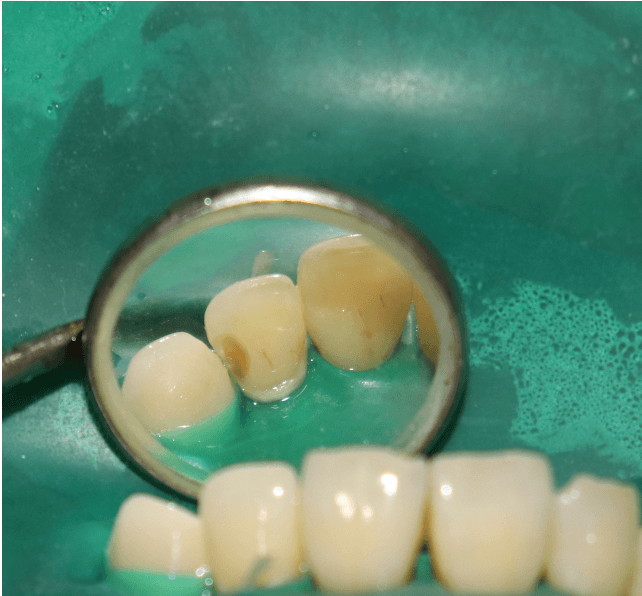
This was followed by etching with 37% phosphoric acid for 15 seconds and bonding agent (Tetric N Bond, Ivoclar) was applied. To restore the lateral, a sectional matrix was used to build up the proximal wall and then a conventional build up was done with Activa™ Pronto restorative material.
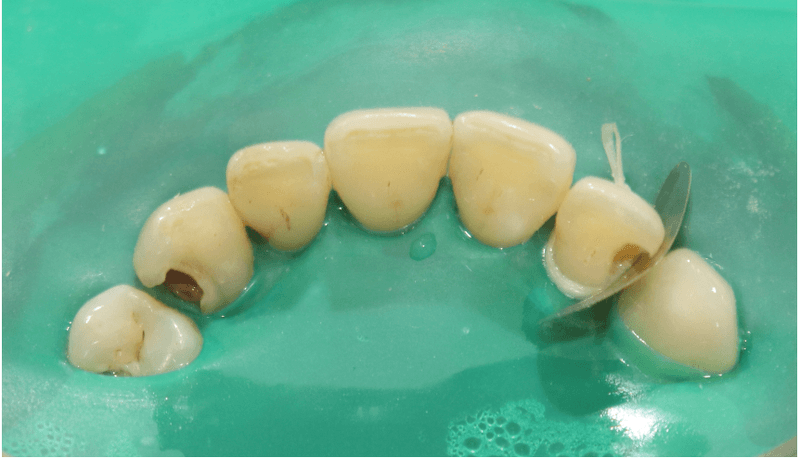

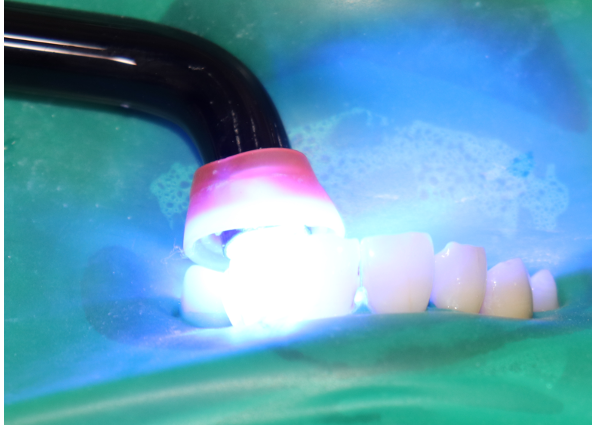
Proximal polishing strips were used to give a proximal finish and finishing and polishing of the palatal surface was done (Rainbow Snap, Shofu).

Treatment of 13:
The carious lesion on 13 was very close to pulp and hence a Lime-Lite™ Enhanced Cavity liner (Pulpdent®, USA) was placed before the Activa™ Pronto restoration was done.

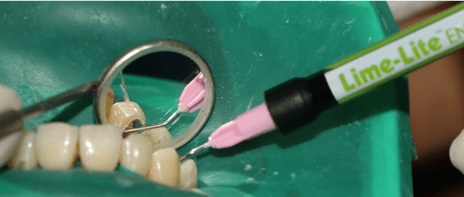
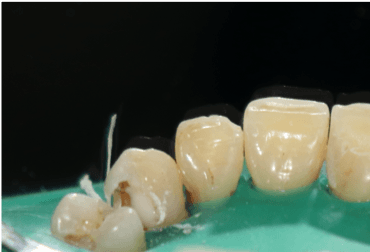
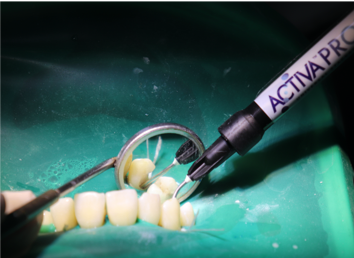
Tooth responded positively to pulp sensibility testing and hence an attempt was made to save the vitality of the pulp.
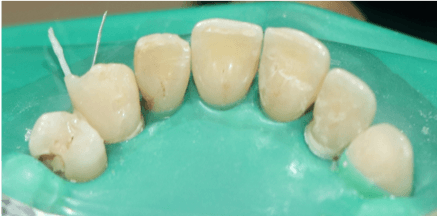
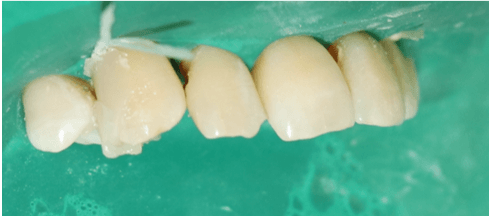
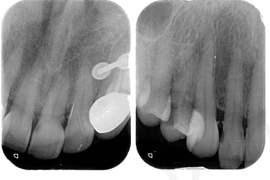
Patient was recalled for follow-up at 1 and 3 months and was asymptomatic after at follow up.
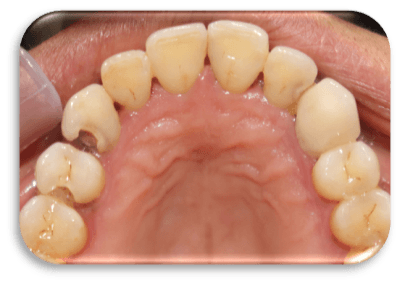
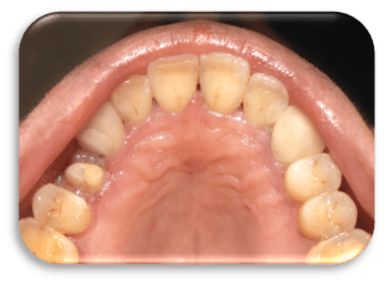
Activa™ Pronto was chosen to be placed in the distal cavity of 22 as:
1. It is a caries prone area best replaced with mineral enriched bio-mimicking composite
2. Ease of application + Moisture tolerance
3. Ability to flex and does not chip inter-proximally
4. Ability to avoid biofilm formation unlike regular composite
Discussion
Dental restoratives—including adhesive materials and composite resins—have developed from a “generationally” informed hierarchy of technological advancement.
Recently, active or bioactive component restoratives have been introduced to the dental market. The term bioactivity refers to the ability of a substance to elicit a response from a host tissue for future formation (re-formation) of a new specific substance or material. These materials facilitate therapeutic effects.
Ideal properties of a bioactive material with specific indications for dentistry include
- stimulating reparative dentin formation
- bactericidal or bacteriostatic activity and
- the maintenance of pulpal vitality.
Treatment applications include
- caries intervention
- tooth structure remineralization and
- bone regeneration.
The manufacturer claims that Activa™ is hydrophilic (contains water but not bisphenol A or its derivatives), creating an ionic resin matrix that is receptive to a moisture-friendly environment such as exists in the oral cavity (although Activa™ is not soluble).The material reportedly extracts fluoride, calcium, and phosphate ions from saliva and then releases these ions.
According to the manufacturer, other benefits of the restorative are an “intimate adaptation to tooth structure” and “exceptional marginal integrity.” This so-called smart material purportedly interacts with the constantly changing pH levels of the oral cavity to enhance and revitalize the physical properties of the tooth structure as well as the material itself (fracture resistance, durability, and toughness).
Due to its bioactive ionic matrix, Activa™ reportedly accomplishes polymerization from both light and chemical- curing processes.
Activa™ can be characterized as a hybrid material because its physical qualities are comparable to those of traditional composite resins and its biologic properties are similar to those of glass ionomer systems.
Conclusion
The popularity of Activa™ is slowly taking over and it is seeming to emerge as a handy restorative material, a must have, and an all rounder from the clinician as well as the tooth’s perspective.
References
- Sonarkar S, Purba R. Bioactive materials in conservative dentistry. Int J Contemp Dent Med Rev. 2015;2015:340115.
- Chen L, Shen H, Suh BI. Bioactive dental restorative materials: a review. Am J Dent. 2013;26(4):219-227.
- Asthana G, Bhargava S. Bioactive materials: a comprehensive review. Sch J Appl Med Sci. 2014;2(6E):3231-3227.
- Anusavice KJ, Shen C, Rawls HR. Phillips' Science of Dental Materials. 12th ed. St Louis: Elsevier Saunders; 2013:519.
- Jefferies SR. Bioactive and biomimetic restorative materials: a comprehensive review. I. J Esthet Restor Dent. 2014;26(1):14-26.
- Jefferies SR. Bioactive dental materials: composition, properties, and indications for a new class of restorative materials. Inside Dent. 2016;12(2):58, 60, 62, 64.
- Pulpdent. ACTIVA BioACTIVE [white paper]. 3rd ed. June 2017. https://www.pulpdent.com/ wp-content/uploads/2015/12/ACTIVA-White-Paper-XF-VWP6-REV-06-2017-3.pdf. Accessed January 17, 2018.

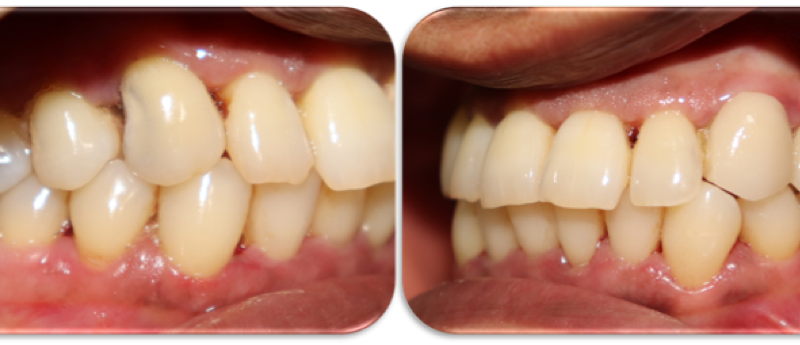


















Comments